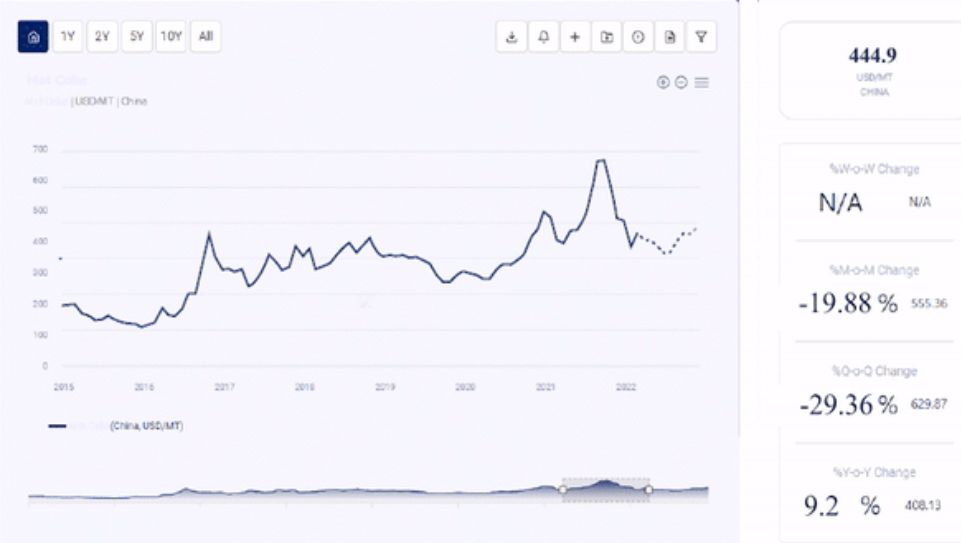
In this detailed report, we delve into the production cost processes of Cellulase, providing an in-depth cost analysis that offers valuable insights for stakeholders and industry players. This analysis is crucial for understanding the economic dynamics of cellulase production and identifying opportunities for cost optimization.
Request For Free Sample: https://www.procurementresource.com/production-cost-report-store/Cellulase/request-sample
Procurement Resource Assessment of Cellulase Production Process
Procurement Resource offers a meticulous assessment of the cellulase production process, utilizing cutting-edge methodologies and comprehensive data analytics. Our evaluation encompasses the entire production lifecycle, from raw material procurement to the final product, ensuring that every cost factor is accurately accounted for. By leveraging our extensive industry expertise, we provide stakeholders with actionable insights and strategic recommendations to enhance production efficiency and cost-effectiveness.
Product Definition
Cellulase is a group of enzymes predominantly produced by fungi, bacteria, and protozoans, which catalyze the cellulolysis (the decomposition of cellulose and some related polysaccharides) of biomass. The enzyme complex consists of three main types: endoglucanases, exoglucanases, and beta-glucosidases, each playing a unique role in breaking down cellulose into glucose units. Cellulase has extensive applications in various industries, including biofuel production, textile manufacturing, food and beverage, and paper and pulp industries.
Market Drivers
The global demand for cellulase is driven by several key factors:
- Biofuel Industry: The push towards renewable energy sources has significantly increased the demand for cellulase in the biofuel industry. Cellulase is essential in the production of cellulosic ethanol, a sustainable alternative to fossil fuels.
- Textile Industry: In the textile sector, cellulase is used for biopolishing fabrics, enhancing the quality and texture of textiles, which has bolstered its demand.
- Food and Beverage Industry: The food and beverage industry utilizes cellulase for various applications, including juice extraction, improving the digestibility of animal feed, and enhancing the flavor and nutritional value of food products.
- Paper and Pulp Industry: Cellulase plays a critical role in the paper and pulp industry by aiding in the deinking of recycled paper and improving pulp properties, thus driving its demand in this sector.
- Environmental Regulations: Stricter environmental regulations promoting the use of eco-friendly and sustainable products have also contributed to the increased demand for cellulase.
Raw Materials Requirements
The production of cellulase involves the utilization of various raw materials, which are crucial for the synthesis and activity of the enzyme. Key raw materials include:
- Substrates: These are primarily agricultural residues like straw, corn stover, and sugarcane bagasse, which are rich in cellulose.
- Microorganisms: Strains of fungi, bacteria, and actinomycetes that have high cellulase-producing capabilities.
- Nutrients: Essential nutrients like nitrogen, phosphorus, and trace elements to support the growth and metabolic activity of microorganisms.
- Fermentation Media: Specific media components optimized for cellulase production through fermentation processes.
Costs and Key Process Information
The cost analysis of cellulase production is multifaceted, involving various cost components:
- Raw Material Costs: These are influenced by the type and source of substrates and microorganisms used. Agricultural residues, being relatively inexpensive and abundantly available, can help lower raw material costs.
- Fermentation Costs: This includes the costs associated with setting up and maintaining fermentation facilities, as well as the cost of fermentation media.
- Downstream Processing Costs: This covers the costs related to the extraction, purification, and formulation of cellulase, ensuring it meets the desired quality standards.
- Labor and Operational Costs: Skilled labor for operating fermentation and processing facilities, as well as operational costs like energy and water, are significant cost contributors.
- Quality Control and Compliance Costs: Ensuring that the production process adheres to stringent quality control measures and regulatory compliances is essential, adding to the overall production costs.
Looking for an Exhaustive and Personalized Report That Could Significantly Substantiate Your Business?
For businesses seeking an exhaustive and personalized report on cellulase production cost analysis, Procurement Resource offers bespoke solutions tailored to meet specific business needs. Our detailed reports encompass all critical aspects of the production process, providing insights that can drive strategic decision-making and operational efficiencies. By leveraging our expertise, businesses can gain a competitive edge, optimize their production processes, and achieve significant cost savings.
Conclusion
In conclusion, the cellulase production cost analysis report by Procurement Resource is an invaluable tool for industry stakeholders. It provides a comprehensive understanding of the production process, market drivers, raw material requirements, and cost factors. With our detailed assessment, businesses can identify key opportunities for cost optimization and strategic growth. As the demand for cellulase continues to rise across various industries, having access to such insightful analysis is crucial for maintaining a competitive edge in the market.
Contact Us:
Company Name: Procurement Resource
Contact Person: Christeen Johnson
Email: [email protected]
Toll-Free Number: USA & Canada – Phone no: +1 307 363 1045 | UK – Phone no: +44 7537 132103 | Asia-Pacific (APAC) – Phone no: +91 1203185500
Address: 30 North Gould Street, Sheridan, WY 82801, USA